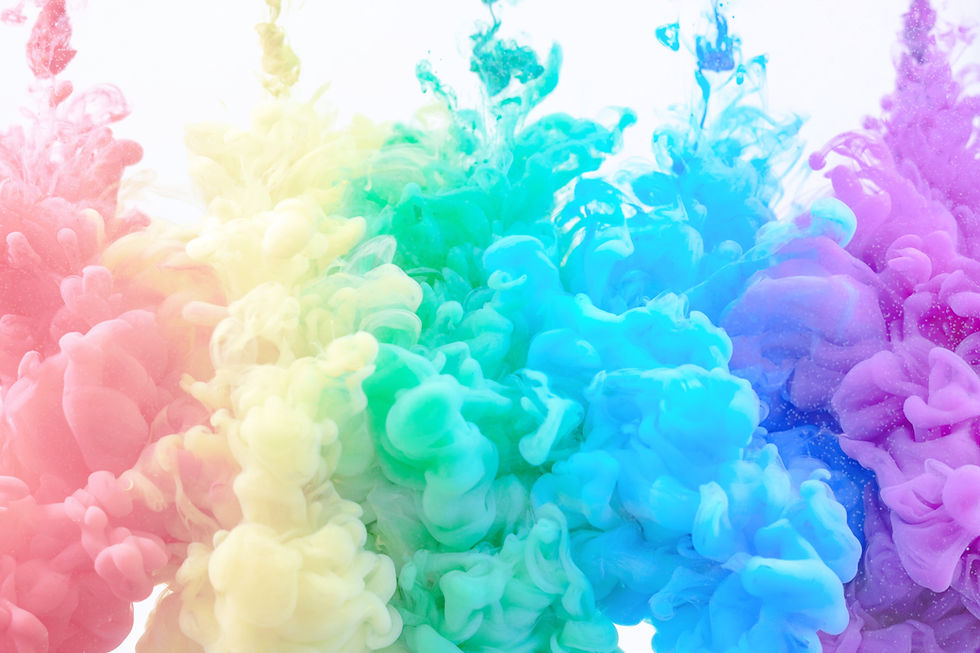The Symphony of Colors: How They Affect Our Mood
- thatsglow
- Oct 1, 2023
- 3 min read
In the great tapestry of life, colors are the living threads that weave emotions and experiences into our daily lives. From the serene blue of the sky to the fiery red of a setting sun, colors have an undeniable impact on our mood and psychological well-being.
Although this influence often goes unnoticed, a look into the world of color psychology reveals a fascinating connection between our emotions and the hues that surround us.

The science of color psychology
Color psychology is the study of how colors influence human behavior and emotions. It examines the way different hues can evoke specific reactions and sensations in individuals. Researchers have found that different colors can evoke different emotional responses based on their association with certain experiences, cultural contexts and personal preferences.
The emotional symphony of colors
The Serenity of Blue: Imagine looking out at the calm sea or a cloudless sky - the color blue has the natural ability to evoke feelings of calm and serenity. It is often associated with stability, trust and peace. Blue rooms and environments are known to promote relaxation and reduce stress.
The Vitality of Yellow: Often associated with sunshine and warmth, yellow is a color that radiates positivity and happiness. It can increase optimism, creativity and energy. However, an excessive presence of yellow can lead to feelings of frustration or anxiety, which is why it is best used in moderation.
The Passion of Red: As the color of love and passion, red can evoke strong emotions and physical reactions. It increases heart rate and stimulates excitement and intensity. It's a bold color, but too much red can cause restlessness or even aggression.
The harmony of green: Green symbolizes nature and growth and has a calming and refreshing effect on our mood. It is associated with harmony, balance and renewal. Spending time outdoors or incorporating green elements into our surroundings can promote a sense of calm.
The joy of orange: A mix of the energy of red and the happiness of yellow, orange radiates enthusiasm and joy. It promotes social interaction and can stimulate creativity. However, just like red, too much orange could overwhelm the senses.
The Wisdom of Purple: Often associated with luxury and spirituality, purple has a regal quality that symbolizes wisdom and introspection. It can stimulate creativity and promote a sense of inner peace.

Mindful use of colors
By understanding the influence of colors on our mood, we can make conscious decisions in our daily lives. Whether it's choosing colors for our home decor, clothing or work environment, paying attention to their emotional impact can improve our overall well-being.
Personal preferences: Colors affect each person differently, so it is important to identify the colors that appeal to us personally and make us feel good.
Create balance: Just like in music, a balanced color combination can create harmony. Experiment with different color schemes to find the right mix that suits your mood and the atmosphere you want.
Context Matters: Consider context and purpose when using colors. For example, bold and stimulating colors might be appropriate for a creative space, but could hinder relaxation in the bedroom.

Colors are an essential part of our lives and their influence on our mood is a symphony of emotions waiting to be explored. From calming blue to stimulating yellow, each shade offers a unique experience that impacts our psychological state. By understanding the language of colors and using them mindfully, we can transform our surroundings into a canvas of emotions that enriches our daily lives and promotes our well-being.



